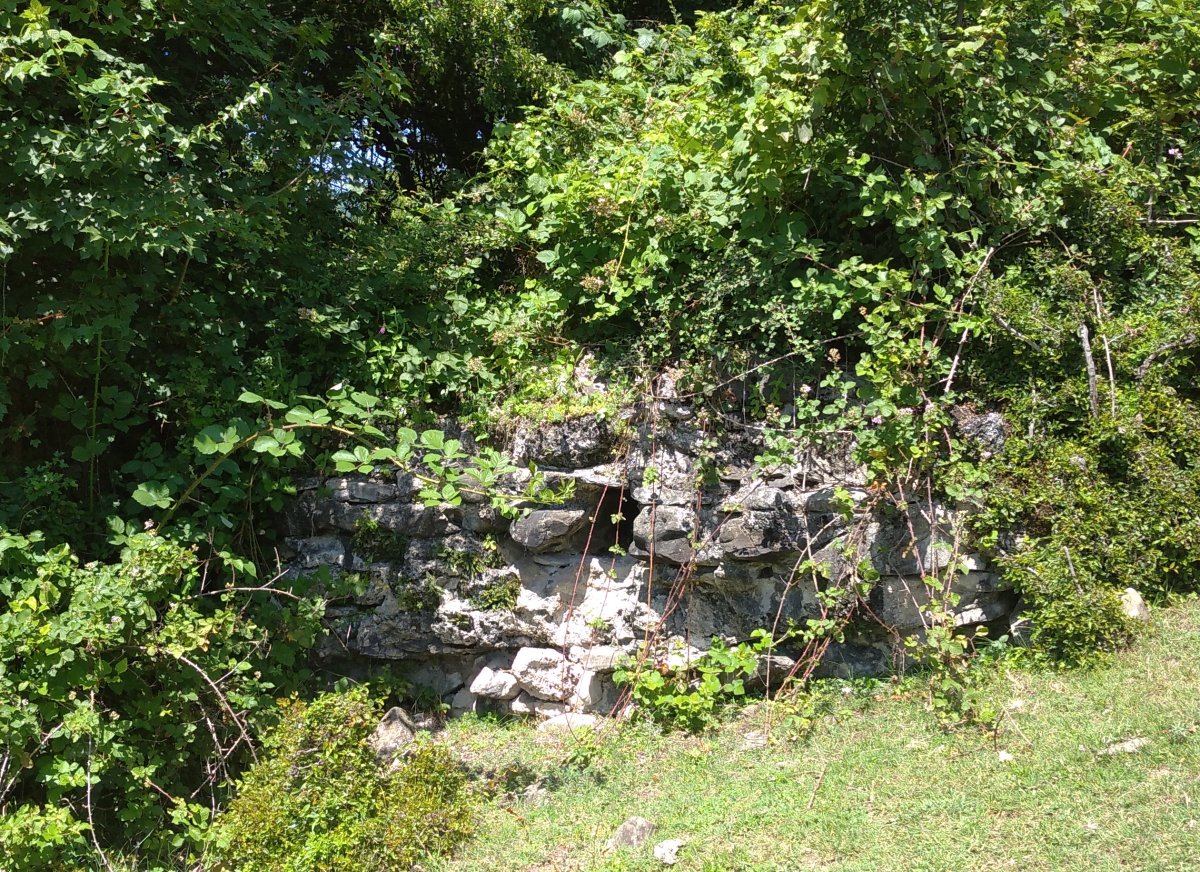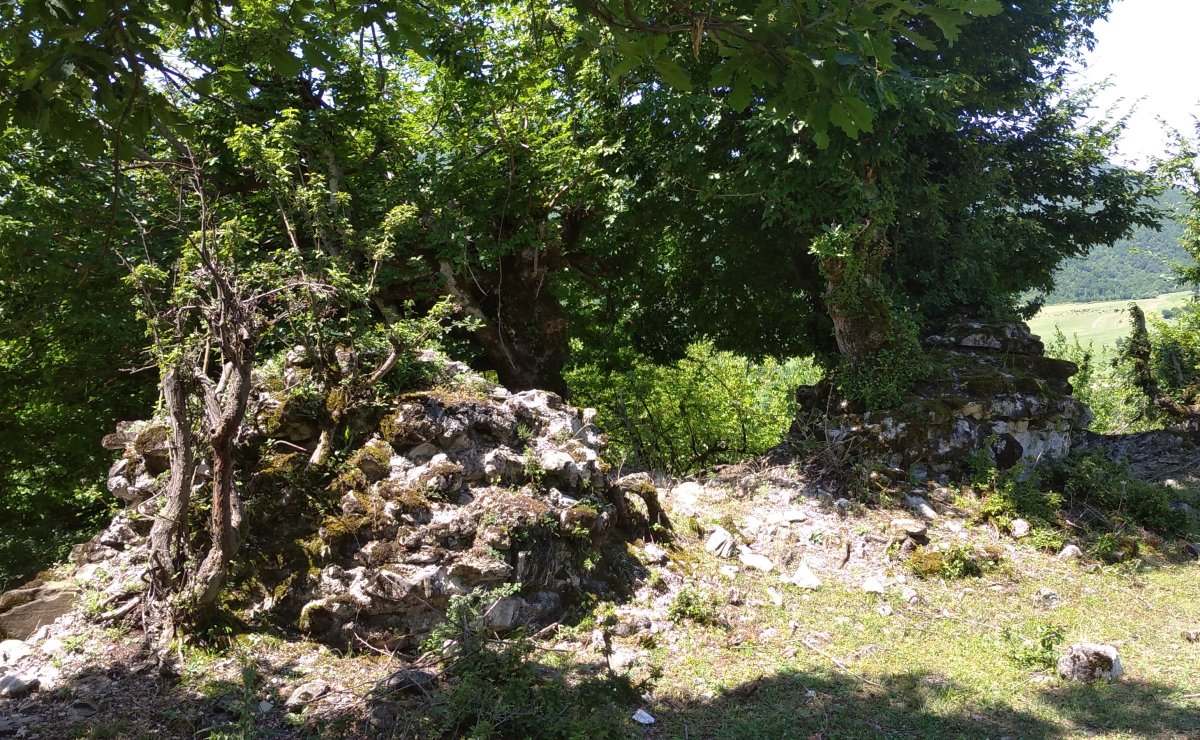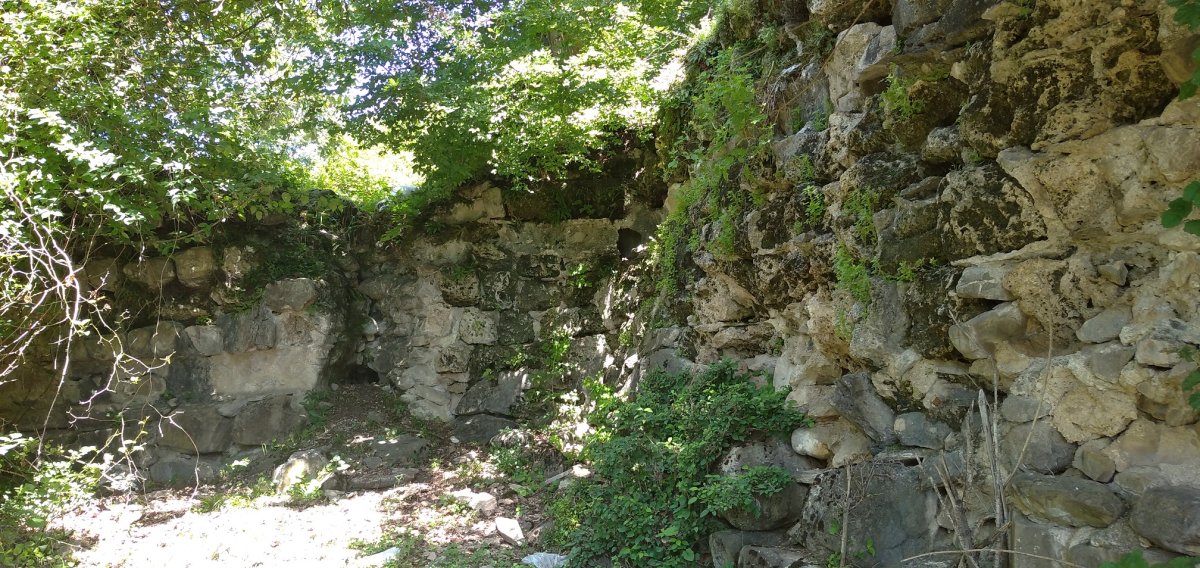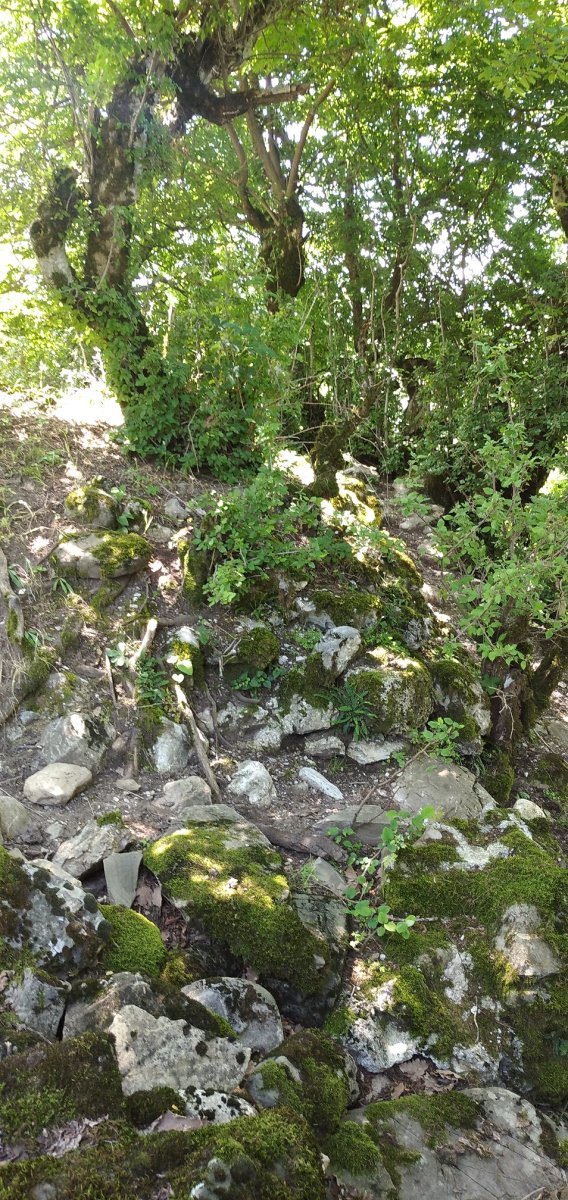Kyungyut fortress
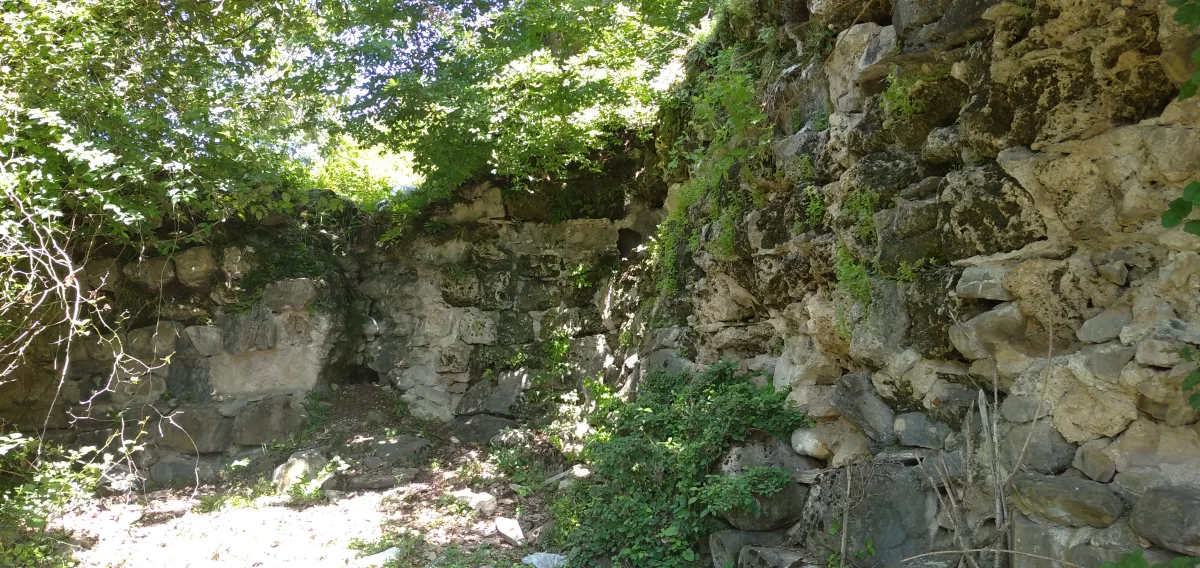
- 7-01-2025, 00:13
- Fortresses
- Elnur Nəciyev
One of the well-researched historical monuments in Bash Kyungyut village is the fortress located on top of Kilsadag. The initial investigation of this fortress is associated with the name of Firudin Qadirov. He also authored a separate article about it. In that article, he provided detailed information regarding the results of his research. It is evident from the article that during 1964–1968, Firudin Qadirov, who visited Shaki as part of a mission to study fortification monuments in the Gabala region, had the opportunity to examine the Kyungyut fortress as well. This fortress has a rectangular shape. Its length is 120 meters, and its width is 42 meters. The walls and towers of the fortress have remained relatively well-preserved on the southern and western sides. The thickness of the walls is 2.65 meters, and their height ranges from 2 to 5 meters in different places; the upper parts are completely destroyed. The towers of the fortress are square in shape. Two towers on the southern side are relatively intact.
Each of their sides measures 8 meters. Kyungyut Fortress has two gate openings. The main gate is located on the southern wall. The ancient road ascending from the plain there into the fortress and the remains of two closely positioned towers support this conclusion. Although it is not possible to determine the exact shape and dimensions of the gate, the 6-meter distance between the two towers suggests that the gate was constructed wide enough for wheeled transport to enter.
The monument is built from river stones using lime mortar. No bricks or other construction materials were used in its construction. The fortress could not preserve its original form. However, based on the remnants of several arrow slits in the fortress walls, it can be said that the loopholes were mainly built in a square shape (40x40 cm) and, in some places, circular. Such loopholes are also characteristic of the fortress walls in the Salbir section of Gabala. The structure of the towers of Kyungyut Fortress resembles ancient, simple defensive fortifications. In 1968, exploratory archaeological excavations were carried out in three areas of the monument — the northwest, south, and central parts — to study the Kyungyut Fortress archaeologically.
As a result of archaeological excavations in Kyungyut Fortress, pottery fragments found in the cultural layer were identified as glazed vessels of the bowl type widely produced in the 9th–10th centuries. The unglazed pottery fragments collected mainly consist of pieces of jugs, pans, pots, cauldrons, single-foot vases, milk containers, and construction materials made of clay. Researcher Firudin Qadirov notes that the foundation of Kyungyut Fortress was laid in the 4th–6th centuries, it was widely used as a defensive structure in the 7th–8th centuries, and was destroyed in the 11th century during the end of the feudal rule in Gabala and Shaki or during the Seljuk invasions. The main entrance gate of the fortress was protected by square towers on both sides. It is said that Kyungyut Fortress dates back 1300–1400 years, but further research is needed to confirm this.
The Albanian temple located in the Kilsadag area also draws attention. There is no information regarding the history of this monument, nor is there any plaque concerning its preservation. Researcher A. Garaahmadova assumed that this temple, located 10–12 meters east of the fortress entrance (outside the fortress), was built in the 6th–7th centuries. In terms of construction style, it resembles the chapel in Middle Zayzid. However, unlike that, it is slightly larger, although the interiors are very similar.
